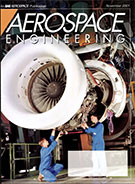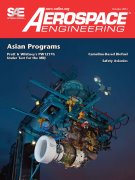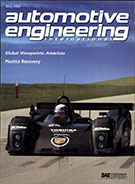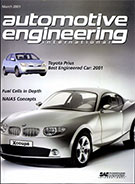Magazine

SAE Truck & Off-Highway Engineering: August 2020
2020-08-06
Big future for e-axles, advanced motors Top transmission engineers claim driveline electrification will transform everything from all-wheel drive to Class 8 tractor-trailers. Big data's benefits keep a-comin' Gigabytes of data are being collected and increasingly mined to improve field operations, maintenance and even vehicle design. Transformative times Despite a challenging climate, technology development progresses - as does the sharing of innovative ideas - virtually. Editorial Zeroing in on zero emissions Softing envisions secure, reliable predictive maintenance Reconstructing accidents in the ADAS age Paving the way to improved truck fuel efficiency Nikola looks to accelerate production, hydrogen infrastructure Mecalac designs unique-pivoting swing loader Q&A' Horiba's Joshua Israel discusses complex regulatory landscape's impact on commercial-vehicle development and shift to electrification.



















